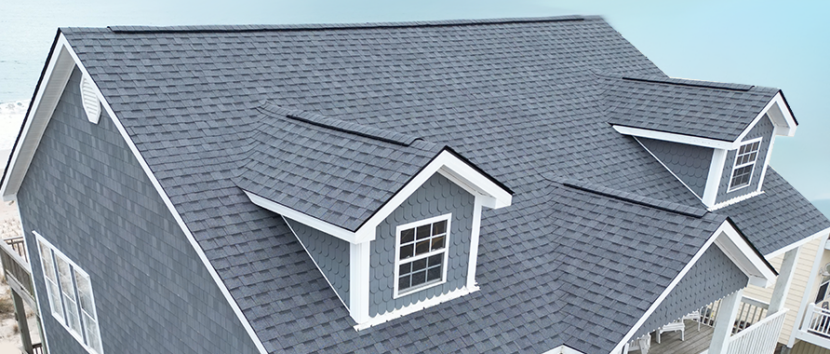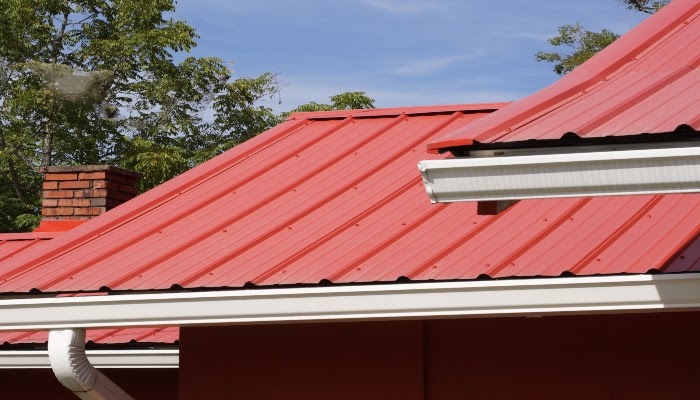How to Clean and Repair a Metal Roof

Metal has a reputation for being impermeable, but it’s not the roofing superhero you might want it to be. Like all roofing materials (and superheroes), it has a long list of nemeses. Water and wind can lead to buckling, corrosion, and tension loss. Its fasteners and seams are just as prone to breakage. Sealants and butyl tape don’t last forever, so you should repair and clean those glimmering steel surfaces at least once a year.
Cleaning Routine
Debris, minerals, and chemicals can all degrade your paint system and the substrate beneath it, so regular cleaning will extend your roof’s lifespan. While modern coatings are engineered to last, resin and paint can lose their strength. Airborne sand, leaves, and spores are destructive on their own, but the pollutants they carry are even more devastating. That seaside home comes with an entirely new set of challenges.
All of that delicious saltwater air can cause corrosion in even rust-resistant roofing, so it’s best to wash down your metal panels every three months. Even oxygen and sunlight can break down adhesion, so if your roof surface is whitening, it might be time for a fresh coating.
How to Clean a Metal Roof
Simpler is usually better, particularly when it comes to metal. A soft washcloth and non-abrasive sponge should do the trick. Plain water will wash off loose debris without harming your coating, so it’s an excellent metal roof cleaner. Tougher mold infestations and toxins are more of a challenge, so they require a mild detergent and soft brush.
Mild bleach solution and detergent will deal with tougher problems, but coastal residue shouldn’t need much more than a hosepipe and a little H2O. If you lack the equipment to handle the job safely, though, the best way to repair a metal roof is to call a roofing company. Roof falls cause thousands of deaths every year. Make sure you don’t become a statistic.
Metal Roof Repair
Metal outlasts the toughest roofing materials, but that doesn’t mean it’s maintenance-free. It’s prone to a few common problems:
- Holes and leaks can cause mold infestations and ceiling damage.
- Clips and sealants can pop out, requiring a new standing seam system.
- Poorly-secured paneling and seam laps can lose their tight seals.
- Patches can fail prematurely when their rate of expansion doesn’t match that of your roof.
A rubber repair kit or seam tape can cure a thousand ills. EPDM is easy to glue down and has a lifespan of about five years. Even the best seams can fail prematurely if you glue new materials to old ones, though, so it’s best to clean the site of the damage thoroughly with EPDM cleaner.
Then use a marker to trace the membrane area before applying primer. Give it 10 minutes to dry before applying your patch. A seam roller will tighten your seal and extend its lifespan, so use it to apply plenty of pressure. If your bond is bubbled, place a brick or other weight over the area to encourage curing.
If you have drip edge problems, an EPDM lap seal or patch will do the trick. EPDM tape might be enough for minor holes. All you need to do is clean, peel, and stick. It doesn’t get easier than that, but don’t neglect the first step. Even fine debris will ruin your adhesion, so cleaning is the most important step in roof repair.
How to Repair a Metal Roof Hole
Rust holes are a common corrugated metal roofing woe. They tend to appear in galvanized steel and copper, particularly in seaside homes. A little roof cement and a mesh patch will fix the hole, but don’t leave any rust behind. It will spread like a virus.
Use a wire brush to remove the corrosion before applying a rust-inhibiting primer. Once your first layer is dry, apply urethane cement to the offending patch. Now it’s time to apply your mesh. Cut your patch an inch larger than the hole it’s going to cover, then create two layers of mesh and cement, ending with the latter to create a waterproof seal.
Routine Maintenance
Metal roofs need more than just patching and cleaning. Nearby tree branches can cause devastating damage in heavy storms, so regularly cut back your flora. Clogged downspouts and drain boxes can cause water damage that’s expensive to repair, so clear those blockages at least twice a year. If debris and water are collecting on your roof, they should be cleared after every rain.
It’s tempting to take the DIY route to roof maintenance, but if you lack experience and OSHA-approved safety equipment, you should never climb onto your roof. Whether you’re repainting a metal roof or patching it, ask your friendly roofer to perform the job safely.
Need help with a roofing project. Contact 1-800-HANSONS for a free estimate.
Related content: How to Remove Algae from Your Roof
Get a Free Estimate Today
70% off installation. Special financing available. See details.













